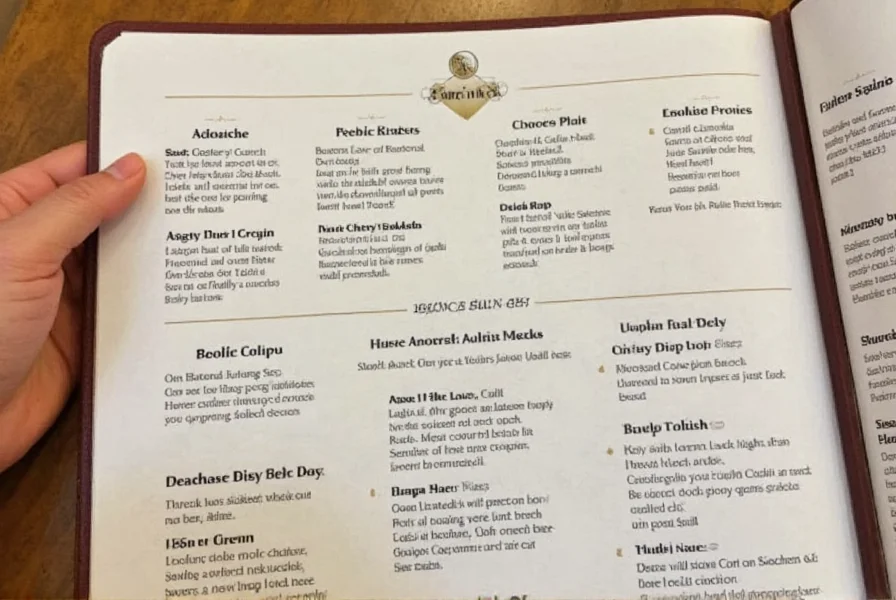Based on current information, there is no widely recognized restaurant chain named "Cumin N Eat." The query likely represents either a misspelling of a local restaurant name, confusion between the spice cumin and restaurant menu offerings, or a request for culinary ideas featuring cumin as a key ingredient.
Many people searching for "cumin n eat menu" are probably looking for one of two things: a specific restaurant's offerings or recipes featuring cumin. Understanding this distinction helps clarify your search results. Cumin, a warm, earthy spice essential in many global cuisines, often appears in restaurant menus across Indian, Middle Eastern, Mexican, and North African culinary traditions.
Understanding the Cumin Confusion
When users search for "cumin n eat menu," they typically fall into one of three categories:
| Searcher Type | Actual Need | Recommended Search Approach |
|---|---|---|
| Restaurant seeker | Finding a specific establishment | Add location ("cumin n eat menu Chicago") |
| Recipe explorer | Dishes featuring cumin | "cumin recipes" or "dishes with cumin" |
| Spice enthusiast | Culinary applications of cumin | "cumin menu ideas" or "cumin pairings" |
Cumin's Role in Global Cuisine Menus
Cumin appears prominently across various restaurant menus worldwide. This versatile spice enhances both vegetarian and meat dishes with its distinctive warm, slightly bitter flavor profile. Professional chefs typically use cumin in these menu categories:
- Appetizers: Hummus, baba ganoush, spiced nuts, and bean dips
- Main courses: Curries, chili, tacos, stews, and roasted vegetable plates
- Rice dishes: Biryani, pilafs, and seasoned rice bowls
- Signature sauces: Harissa, adobo, and various curry bases
Restaurants specializing in cuisines where cumin features prominently often design entire menu sections around this spice. For example, authentic Indian restaurants typically include cumin in 70-80% of their savory dishes, while Mexican establishments use it in approximately 50% of their meat-based entrees.

Creating Your Own Cumin-Focused Menu
If you're interested in cumin-centric dining but can't find a "Cumin N Eat" restaurant, consider crafting your own menu. Professional chefs recommend these pairings for balanced cumin-forward dishes:
| Dish Type | Recommended Cumin Amount | Ideal Pairings |
|---|---|---|
| Vegetable dishes | 1/2 tsp per serving | Lemon, cilantro, roasted garlic |
| Bean/lentil dishes | 3/4 tsp per serving | Tomatoes, smoked paprika, onions |
| Meat dishes | 1 tsp per serving | Paprika, coriander, cayenne |
| Rice/grain dishes | 1/2-3/4 tsp per serving | Saffron, turmeric, cardamom |
When preparing cumin dishes at home, remember that toasting whole cumin seeds before grinding releases significantly more flavor than using pre-ground cumin. Many professional kitchens toast cumin seeds at 350°F for 2-3 minutes until fragrant before incorporating them into dishes.
Finding Actual Restaurant Menus Featuring Cumin
If you're searching for restaurants with cumin-heavy menus in your area, refine your search strategy:
- Specify your location ("Indian restaurants with cumin dishes in Seattle")
- Search by cuisine type ("Middle Eastern menu cumin featured")
- Check restaurant websites directly for digital menus
- Use food delivery platforms with ingredient filters
Many restaurant discovery platforms now allow filtering by specific ingredients. When examining menus online, look for dishes containing "jeera" (the Hindi word for cumin), as this often indicates authentic preparation methods. High-quality restaurant menus typically mention cumin in context with other spices rather than listing it as a standalone ingredient.
Avoiding Common Menu Search Mistakes
Many people encounter frustration when searching for "cumin n eat menu" because of these common errors:
- Using informal abbreviations like "n" instead of "and" in restaurant searches
- Assuming all restaurants highlight specific spices in their names
- Not including location modifiers for local restaurant searches
- Mistaking recipe sites for actual restaurant menus
For the most accurate results, search using the restaurant's exact name if known, or use descriptive terms like "restaurants with cumin-heavy menus near me" or "best cumin dishes in [city name]." Food bloggers and culinary websites often compile "best of" lists featuring cumin-centric dishes at local establishments.
Is there a restaurant chain called Cumin N Eat?
No verified national or international restaurant chain operates under the name "Cumin N Eat." The query likely represents either a misspelling of a local establishment's name or confusion between the spice cumin and menu offerings featuring this ingredient.
What restaurants typically feature cumin prominently on their menus?
Indian, Middle Eastern, Mexican, and North African restaurants most commonly feature cumin prominently. Look for dishes like curries, hummus, chili, tacos al pastor, and various rice preparations which typically contain significant cumin elements.
How can I find menus featuring cumin in my area?
Search using specific terms like "Indian restaurants near me," "Middle Eastern menu cumin," or "best cumin dishes [your city]." Many food delivery apps now allow filtering by specific ingredients, and restaurant websites often highlight signature spice blends in their menu descriptions.
What's the difference between whole cumin seeds and ground cumin in restaurant dishes?
Professional kitchens typically use whole cumin seeds toasted before grinding for maximum flavor in signature dishes, while ground cumin appears in quicker preparations. Whole seeds provide a more complex, nuanced flavor profile that many high-quality restaurants prefer for their featured cumin dishes.











 浙公网安备
33010002000092号
浙公网安备
33010002000092号 浙B2-20120091-4
浙B2-20120091-4